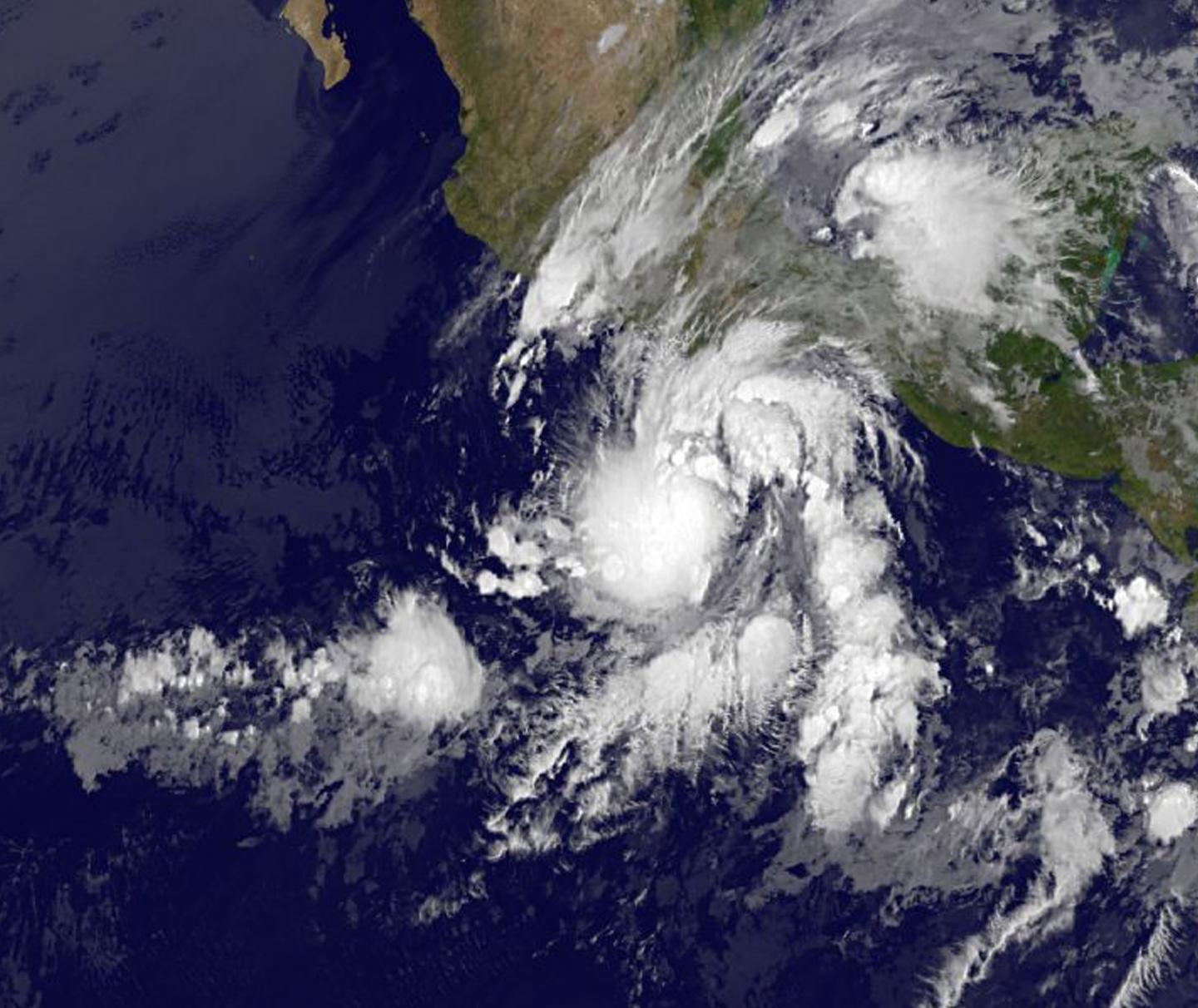
Credit: Credit: NASA/NOAA GOES Project
The second tropical depression of the Eastern Pacific Ocean hurricane season formed near southwestern Mexico. NASA and NOAA satellites provided infrared and visible imagery of the strengthening storm.
At 11 a.m. EDT (1500 UTC) on May 31, the National Hurricane Center in Miami, Florida noted the development of Tropical Depression 2E (TD2E). The formation of the storm has already generated a tropical storm watch for portions of the coast of Mexico. The government of Mexico has issued a Tropical Storm Watch from Salina Cruz to Puerto Escondido.
The center of tropical depression two-e was located near latitude 13.9 degrees north and longitude 97.8 degrees west. That's about 150 miles (245 km) southwest of Puerto Angel, Mexico and about 250 miles (400 km) southeast of Acapulco. NHC noted that maximum sustained winds were near 30 mph (45 kph) with higher gusts. Some strengthening is forecast during the next 48 hours, and the depression could become a tropical storm on Thursday, June 1.
Infrared imagery captured before the storm was officially designated a depression provided a look at the temperatures of TD2E's clouds. The infrared data was taken on May 31 at 0841 UTC (4:41 a.m. EDT) by the Atmospheric Infrared Sounder or AIRS instrument that flies aboard NASA's Aqua satellite. That data was false colored and made into an image at NASA's Jet Propulsion Laboratory in Pasadena, California to highlight cloud top temperatures. The coldest cloud tops indicate towering thunderstorms high into the troposphere. The colder the clouds, the stronger the storms. AIRS data showed that some cloud tops were as cold as minus 63 degrees Fahrenheit or minus 53 degrees Celsius and cloud top temperatures that cold have been shown to generate heavy rainfall.
NOAA's GOES-East satellite captured a visible image of TD2E at 1145 UTC (7:45 a.m. EDT) as it lingered in the Eastern Pacific Ocean near southwestern Mexico. The visible GOES-East image showed thunderstorms wrapped around the low-level center of circulation and extending in a fragmented band east of the center to the south.
The depression was moving toward the northeast near 3 mph (6 kph) and the NHC expects a slow motion toward the northeast during the next couple of days. On the forecast track, the center of the depression should approach the pacific coast of Mexico on Friday.
For updated forecasts, visit the NHC website at: http://www.nhc.noaa.gov.
###
Media Contact
Rob Gutro
[email protected]
@NASAGoddard
http://www.nasa.gov/goddard
############
Story Source: Materials provided by Scienmag



